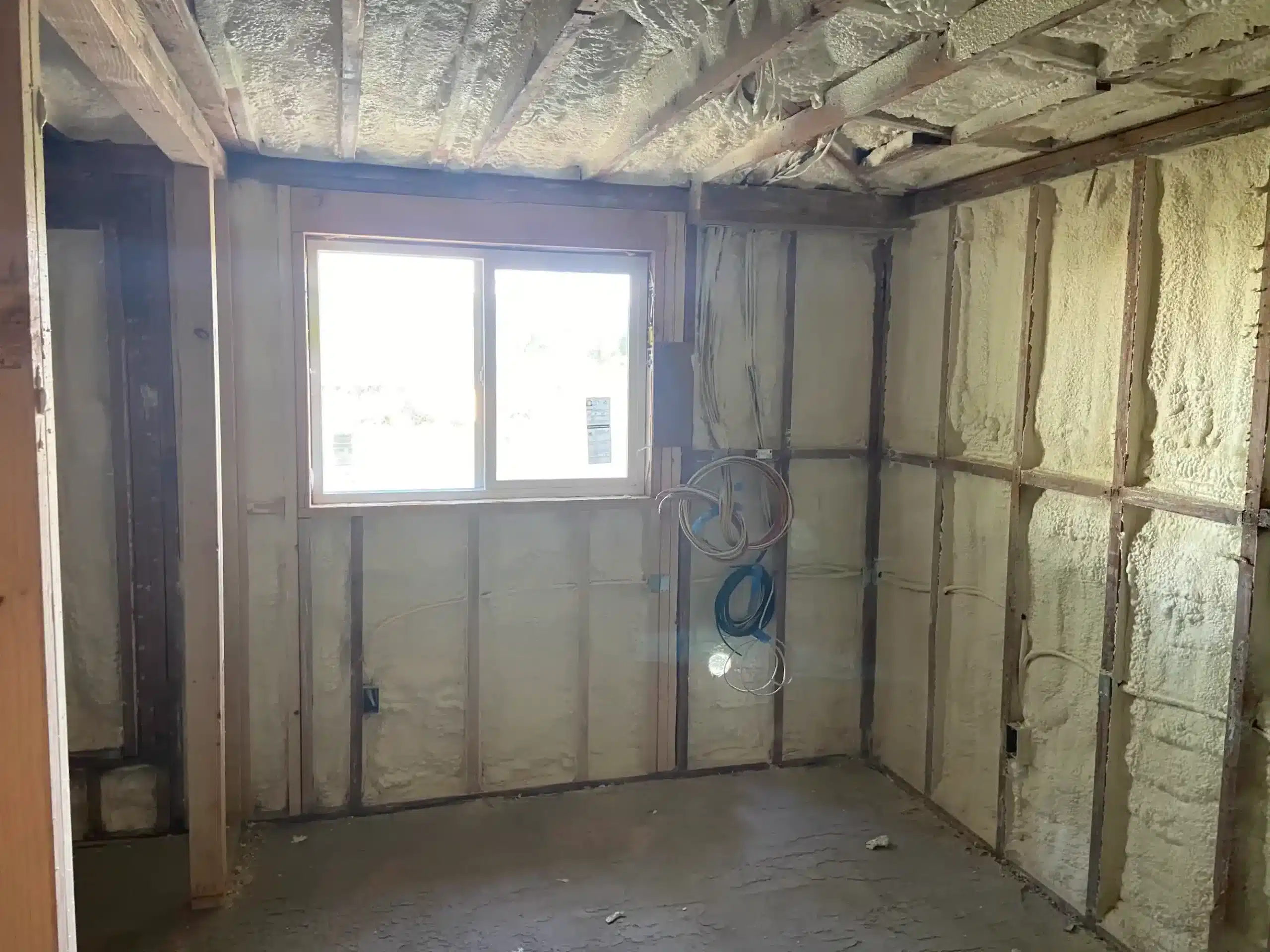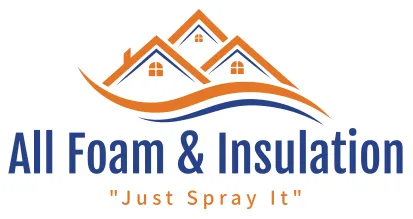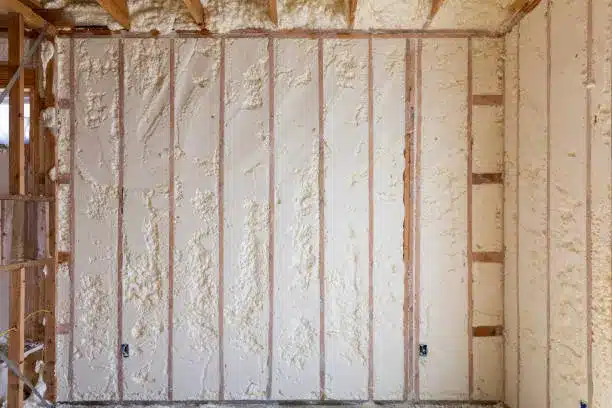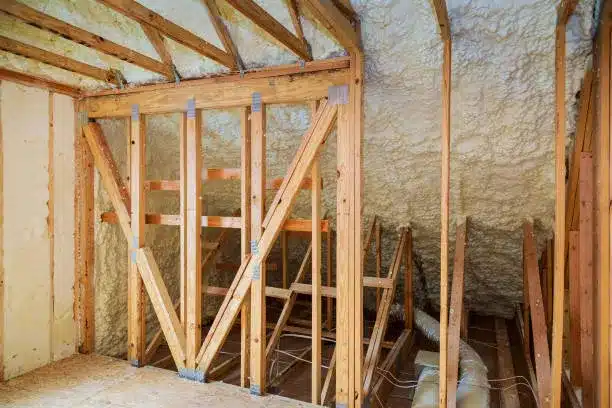For many properties in Medford, Oregon, open-cell spray foam insulation is an excellent choice, particularly for above-grade applications like exterior walls, attic roof decks, and interior walls. Its ability to expand significantly allows it to create a superior air seal in oddly shaped cavities, which is critical for managing energy costs during the hot, dry summers and cool, wet winters of the Rogue Valley. However, it is not a one-size-fits-all solution; its high vapor permeability and soft, sponge-like structure make it unsuitable for areas exposed to potential bulk water or high moisture, such as basement walls or below-grade foundations.
This article provides a detailed look at open-cell spray foam, helping you understand its specific benefits, ideal applications, and limitations within the context of our local climate. The information here is based on extensive field experience insulating homes and commercial buildings throughout Southern Oregon. Making an informed decision starts with understanding the material itself and how it performs in real-world conditions.
Understanding Open-Cell Spray Foam
Open-cell spray polyurethane foam (ocSPF) is a low-density insulation material. When applied, two chemical components are mixed, creating a reaction that causes the foam to expand up to 100 times its initial volume. This massive expansion is what allows it to fill every crack and crevice in a wall or ceiling assembly, effectively stopping air leakage.
The “open-cell” name refers to its internal structure. The tiny cells of the foam are not completely closed, which makes the material soft, flexible, and permeable to water vapor. This permeability can be an advantage in certain situations, as it allows building materials like wood to breathe and dry out if they get damp. The typical R-value for open-cell foam is around R-3.5 to R-3.8 per inch of thickness, a figure consistent with data provided by the U.S. Department of Energy.
Key Benefits of the Medford Climate
Medford’s climate presents a unique challenge, with significant temperature swings between seasons. Effective insulation must do more than just slow heat transfer; it must also control air movement.
- Superior Air Sealing: Air leakage is a major source of energy loss. A report from the U.S. Department of Energy notes that gaps and cracks in a home’s envelope can account for a significant portion of heating and cooling costs. Open-cell foam’s expansive nature creates a monolithic air barrier, which helps maintain a stable indoor temperature year-round.
- Excellent Sound Dampening: The soft, pliable structure of open-cell foam is highly effective at absorbing sound waves. This makes it an ideal choice for insulating interior walls between rooms, home theaters, or walls adjacent to busy streets to create a quieter indoor environment.
- Moisture Management: In our climate, the ability of a wall assembly to dry out is important. Open-cell foam’s vapor permeability allows moisture to pass through it rather than trapping it, reducing the risk of condensation and moisture buildup within wall cavities. This is especially useful in above-grade walls where incidental moisture might occur.
Bonus Tip: When using open-cell foam on an attic roof deck, it’s essential to ensure the home has proper mechanical ventilation. Because the foam creates such a tight air seal, controlled ventilation is needed to manage indoor air quality and humidity levels.
Open-Cell vs. Closed-Cell: A Direct Comparison
Choosing the right type of spray foam depends entirely on the application. Both open-cell and closed-cell foams are effective insulators, but they have very different physical properties. The following table breaks down their primary differences.
Feature: R-Value per Inch
- Open-Cell Spray Foam: R-3.5 to R-3.8
- Closed-Cell Spray Foam: R-6.0 to R-7.0
Feature: Density
- Open-Cell Spray Foam: Low (approx. 0.5 lb/ft³)
- Closed-Cell Spray Foam: High (approx. 2.0 lb/ft³)
Feature: Moisture Permeability
- Open-Cell Spray Foam: Permeable (allows vapor to pass)
- Closed-Cell Spray Foam: Impermeable (acts as a vapor barrier)
Feature: Structural Strength
- Open-Cell Spray Foam: Flexible, adds no rigidity
- Closed-Cell Spray Foam: Rigid, adds structural strength
Feature: Sound Dampening
- Open-Cell Spray Foam: Excellent
- Closed-Cell Spray Foam: Good
Feature: Cost
- Open-Cell Spray Foam: Lower
- Closed-Cell Spray Foam: Higher

Ideal Applications for Open-Cell Foam
Based on its properties, open-cell foam excels in specific areas of a home or building in the Medford area.
- Attic Roof Decks: Applying foam directly to the underside of the roof deck creates a conditioned attic space. This protects any HVAC equipment located in the attic from extreme temperatures, improving its efficiency and lifespan.
- Exterior Walls (Above Grade): It is highly effective in standard wall cavities, providing both thermal insulation and a strong air seal.
- Interior Walls and Floors: For reducing noise transmission between rooms or floors, open-cell foam is one of the best options available.
Bonus Tip: When insulating floors above a ventilated crawlspace, open-cell foam works well to stop air drafts. However, the crawlspace must be properly managed for moisture to prevent issues. A ground vapor barrier in the crawlspace is a must.
Things to Consider Before Making a Decision
Before committing to open-cell spray foam, property owners should evaluate a few key factors.
- Project Budget: Open-cell foam is generally less expensive than closed-cell foam, but it represents a larger upfront investment compared to traditional insulation like fiberglass or cellulose.
- Building Codes: Jackson County and the state of Oregon have specific building codes related to insulation, air barriers, and vapor retarders. A professional installer will ensure the application meets all local requirements, including those for fire protection over foam.
- Moisture Conditions: Assess the application area carefully. If an area is below grade, at risk of flooding, or consistently exposed to high humidity without proper ventilation, closed-cell foam is the more appropriate choice.
- Existing Ventilation: As mentioned, tightening a home’s building envelope with spray foam can impact its air exchange rate. Your HVAC system and overall ventilation strategy may need to be evaluated to ensure healthy indoor air quality.
Frequently Asked Questions About Open-Cell Foam
Is open-cell foam a fire hazard?
Like most building materials, spray foam insulation in Medford, OR is combustible. However, all approved spray foam products contain fire retardants and are designed to meet strict fire safety standards. Building codes require that spray foam be covered by a 15-minute thermal barrier, such as drywall, in any occupied space.
Does it have a strong chemical odor?
During insulation application and for a short period afterward, there is a distinct odor as the foam cures. Professional installers use powerful ventilation systems to manage this process. Once fully cured, typically within 24 hours, modern spray foam is inert and does not produce harmful off-gassing. Reputable foams are tested and certified for low VOC emissions by programs like GREENGUARD Certification.
What is the typical R-value of open-cell spray foam?
Open-cell spray foam provides an R-value of approximately R-3.5 to R-3.8 per inch. A standard 2×4 wall cavity filled with open-cell foam would have a total R-value of about R-13, while a 2×6 wall would be around R-20.
Can open-cell foam be installed in an existing home?
Yes, it can be installed in existing homes, a process often called retrofitting. It is most commonly done in open cavities like attics or during a renovation when wall cavities are exposed. It is not suitable for injection into closed walls that already contain insulation.
How does humidity affect open-cell foam?
Open-cell foam is vapor-permeable, meaning humidity can pass through it. This is not an issue in above-grade applications with a proper weather barrier and siding. In consistently damp environments like a poorly ventilated crawlspace, it can absorb and hold moisture, which is why it’s not recommended for those areas.
Does open-cell foam support mold growth?
The foam itself is an inert polymer and does not provide a food source for mold. However, if organic material like dust or dirt becomes embedded in the foam and gets wet, mold could potentially grow on that material. Proper installation and moisture management are key.
Making the Right Insulation Choice
Open-cell spray foam is a high-performance insulation product that is well-suited for many spray foam applications in Medford, especially for property owners focused on achieving a high level of air tightness and sound control. Its primary strengths are its expansive air seal and excellent sound dampening qualities.
Its main limitation is its inability to block bulk moisture, making it the wrong choice for foundations and other below-grade areas. The best approach is to evaluate each part of your property individually to determine where open-cell foam, closed-cell foam, or even other insulation types might be the most effective solution.
Get a Professional Assessment
Every building has unique needs. For a detailed evaluation of your property and a clear recommendation on the best insulation strategy, it’s best to consult with experienced professionals. To discuss your project, contact All Foam & Insulation at (541) 826-9600 or reach out via email to [email protected] for a comprehensive assessment.
Sources
- U.S. Department of Energy – Offers technical specifications and R-value data for both open-cell and closed-cell spray foam insulation.
- GREENGUARD Certification – Details the certification program for low-emitting interior products, including spray foam insulation.




